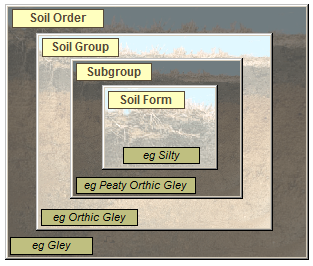Identification and Classification
Soil Identification:
Maori had over thirty names for describing soils, such as:
keretu - clay,
parakiwai - silt,
one tai - sandy soil,
one paraumu - very dark, fertile soil.
Soil scientists tend to use the NZ Soil Classification System for soil identification. Common names persist for historical reasons and because using the names of soils is often locally meaningful.
Te Kowhai silt loam is an example of a soil's common name, Typic Orthic Gley is its classification.
Classifying soils:
Soils with the same classification have a similar range of soil properties, so soil classifications are useful for predicting how a soil will behave.
Naming soils:
Soils are generally named after the locality or place where they were first discovered. Te Kowhai soils were first found in the vicinity of Te Kowhai, a settlement north-west of Hamilton. Soils such as Te Kowhai have all formed from the same parent material, are similar in appearance and have the same soil water and soil temperature characteristics.
Classification:
Soils can be classified according to their physical and chemical characteristics and, morphology(appearance) into groupings called taxonomic units.
Soil order is the highest level of taxonomic unit used.
There are 15 soil orders, each of which is defined by a broad range of characteristics.
Soil orders are subdivided into more related taxonomic units known as soil groups, which in turn are broken down into subgroups.
There is a fourth level of classification known as the soilform, in which parent material, particle-size and permeability are used to further identify the soil.
The diagram shows the relationships within the New Zealand Soil Classification System.

For further detail on Soil Orders and Groups: refer to section: Classifying Soils here
and Understanding Soils: Classifying The Soil